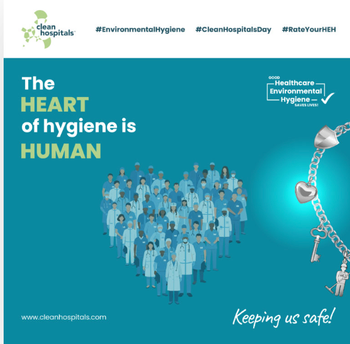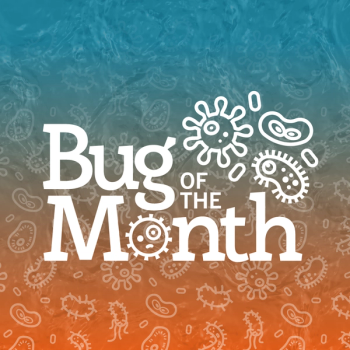
WHO Focuses on International Spread of Disease as Threat to Public Health Security
GENEVA -- More than at any previous time in history, global public health security depends on international cooperation and the willingness of all countries to act effectively in tackling new and emerging threats. That is the clear message of this year's World health report, A Safer Future: Global Public Health Security in the 21st Century, which concludes with six key recommendations to secure the highest level of global public health security:
-- full implementation of the revised International Health Regulations (IHR 2005) by all countries
-- global cooperation in surveillance and outbreak alert and response
-- open sharing of knowledge, technologies and materials, including viruses and other laboratory samples, necessary to optimize secure global public health
-- global responsibility for capacity building within the public health infrastructure of all countries
-- cross-sector collaboration within governments
-- increased global and national resources for training, surveillance, laboratory capacity, response networks, and prevention campaigns
In our increasingly interconnected world, new diseases are emerging at an unprecedented rate, often with the ability to cross borders rapidly and spread. Since 1967, at least 39 new pathogens have been identified, including HIV, Ebola haemorrhagic fever, Marburg fever and SARS. Other centuries-old threats, such as pandemic influenza, malaria and tuberculosis, continue to pose a threat to health through a combination of mutation, rising resistance to antimicrobial medicines and weak health systems.
"Given today's universal vulnerability to these threats, better security calls for global solidarity," said Dr. Margaret Chan, director-general of WHO. "International public health security is both a collective aspiration and a mutual responsibility. The new watchwords are diplomacy, cooperation, transparency and preparedness."
The need for global solidarity is especially clear in the response to outbreaks of infectious diseases. This month, WHO has been closely involved in the response to an outbreak of Marburg fever in Uganda. Together with partners in the Global Outbreak Alert and Response Network (GOARN) -- including the United States Centers for Disease Control and Prevention (CDC), Médecins sans Frontières, the Uganda Virus Research Institute, and African Field Epidemiology Network and local NGOs -- WHO is supporting the Ministry of Health to strengthen active surveillance, contact tracing, infection control, logistics, and social mobilization activities in an effort to contain the outbreak.
The team is carefully studying conditions surrounding the initial transmission, in the hope of improving understanding of where the virus resides in nature and how it passes to humans, improving the ability to predict and prevent outbreaks in the future.
WHO and its partners are closely involved in the global response to H5N1 avian influenza, which has caused huge outbreaks in poultry and at least 308 human deaths since it was first isolated in humans in 1997.
This world health report traces the history of efforts to contain infectious diseases (including plague, cholera and smallpox). It describes the evolution of outbreak surveillance and response activities of international partnerships of agencies and technical institutions. These include GOARN, the chemical and environmental health incident alert and response system, and the Global Polio Eradication Initiative, which is supporting surveillance of many other vaccine-preventable diseases.
The report shows how and why diseases are increasingly threatening global public health security. High and rapid mobility of people is one factor. Airlines now carry more than 2 billion passengers a year, enabling people and the diseases that travel with them to pass from one country to another in a matter of hours. The potential health and economic impact was seen in 2003 with SARS, which cost Asian countries an estimated US$ 60 billion of gross expenditure and business losses.
The report outlines some of the human factors behind public health insecurity, including:
-- inadequate investment in public health resulting from a false sense of security in the absence of infectious disease outbreaks
-- unexpected policy changes such as a decision temporarily to halt immunization in Nigeria, which led to the re-emergence of polio cases
-- conflict situations when forced migration obliges people to live in overcrowded, unhygienic and impoverished conditions heightening the risk of epidemics
-- microbial evolution and antibiotic resistance
-- animal husbandry and food processing threats such as the human form of bovine spongiform encephalopathy (BSE) and Nipah virus
Pandemic influenza is described as the most feared threat to health security in our times. The report sets out the WHO strategic action plan to respond to a pandemic, draws attention to the need for stronger health systems and for continued vigilance in managing the risks and consequences of the international spread of polio and the newly emerging strain of extensively drug-resistant TB (XDR-TB). New health threats have also emerged, linked to potential terrorist attacks, chemical incidents and radionuclear accidents.
The revised International Health Regulations (2005) are based on the premise that no country can fully protect its citizens in isolation or through traditional border controls. The IHR 2005 is a set of rules that governs how countries should assess and report to WHO public health emergencies of potential international concern. The broad definitions of "public health risk," "disease" and "event" ensure that risks caused by the accidental or intentional release of pathogens or chemical or radionuclear materials are covered by the regulations.
Since the IHR 2005 entered into force, almost all of the 193 WHO Member States have established their national IHR focal points, with 179 designations. Since then, WHO has been receiving alerts of health events on a regular basis, conducting joint risk assessments with the notifying State(s) and sharing real-time information with other member states.
Source: World Health Organization
Â
Newsletter
Stay prepared and protected with Infection Control Today's newsletter, delivering essential updates, best practices, and expert insights for infection preventionists.





